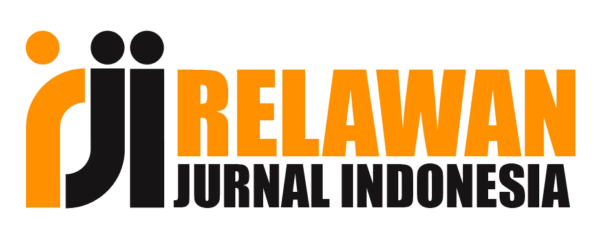Pengembangan buku saku fisika dengan fitur QR Code untuk meningkatkan pemahaman konsep optika geometri
Abstract
One of the learning media by utilizing the collaboration between books and technology is realized in the form of a pocket book with a QR Code feature in which various kinds of content are available, such as illustrated images, educational videos, and online simulations. This research has the aim of developing a product in the form of a Physics pocket book with a QR Code feature on the subject of optical instruments as a book to support students in understanding the concept of geometric optics. The research and development method uses the ADDIE model which consists of 5 stages, namely Analysis, Design, Development, Implementation, and Evaluation. However, this research is limited only to the design stage. The product feasibility test is carried out by 10 people who have studied optical physics and are currently studying physics. The results obtained in the pocket book feasibility test show that the average value of all indicator items in the presentation aspect, content aspect and language aspect has a value above 3.4. Based on the analysis results obtained, the physics pocket book product with the QR Code feature on the subject of optical instruments to improve understanding of concepts is included in the very feasible category. It is recommended that further research is needed to develop a physics pocket book with a QR code feature to improve understanding of concepts on the topic of optical instruments.
Keywords
Full Text:
PDF (BAHASA INDONESIA)References
Astuti, I. A. D., & Bhakti, Y. B. (2018). The effect of the microsoft excel based interactive learning media on the physics problem solving. Indonesian Review of Physics, 1(1), 7–10.
Aydin, S., Keleş, P. U., & Haşiloğlu, M. A. (2012). Establishment for misconceptions that science teacher candidates have about geometric optics. The online journal of new horizons in education, 2(3), 7–15.
Badriana, S., Apriani, H., & Marito, M. (2021). Pengembangan modul fisika berbasis QR-CODE pada pokok bahasan fisika inti kelas XII SMA. Schrodinger Jurnal Ilmiah Mahasiswa Pendidikan Fisika, 2(2), 124–132.
Chu, H.-E., & Treagust, D. F. (2014). Secondary students’ stable and unstable optics conceptions using contextualized questions. Journal of Science Education and Technology, 23, 238–251.
Damis, D., & Muhajis, M. (2019). Analisis hubungan antara motivasi belajar dengan hasil belajar siswa pada Sekolah Dasar negeri 3 Allakuang kecamatan Maritengngae kabupaten Sidenreng Rappang. Idaarah: Jurnal Manajemen Pendidikan, 2(2), 216–228.
Elisa, E., Mardiyah, A., & Ariaji, R. (2017). Peningkatan pemahaman konsep fisika dan aktivitas mahasiswa melalui PhET Simulation. PeTeKa, 1(1), 15–20.
Firmansyah, G., & Hariyanto, D. (2019). Penggunaan QR code pada dunia pendidikan: penelitian pengembangan bahan ajar. Jurnal SPORTIF: Jurnal Penelitian Pembelajaran, 5(2), 265–278.
Husain, M., & Puspasari, D. (2015). Pengembangan bahan ajar buku saku pada kompetensi dasar mengidentifikasi definisi dan ruang lingkup sarana dan prasarana kantor pada siswa kelas XI APK 1 SMKN 1 Surabaya. Jurnal Pendidikan Administrasi Perkantoran (JPAP), 3(3), 1–16.
Khair, J. M., Dasmo, D., & Fatahillah, F. (2021). Pengembangan modul praktikum fisika SMA berbasis inkuiri terbimbing pokok bahasan fluida dinamis. SINASIS (Seminar Nasional Sains), 2(1).
Mustakim, S., Walanda, D. K., & Gonggo, S. T. (2013). Penggunaan QR Code dalam pembelajaran pokok bahasan sistem periodik unsur pada kelas X SMA Labschool UNTAD. Jurnal Akademika Kimia, 2(4), 215–221.
Negoro, R. A., Hidayah, H., Subali, B., & Rusilowati, A. (2018). Upaya membangun ketrampilan berpikir kritis menggunakan peta konsep untuk mereduksi miskonsepsi fisika. Jurnal Pendidikan: Teori dan Praktik, 3(1), 45–51.
Novitasari, D. (2016). Pengaruh penggunaan multimedia interaktif terhadap kemampuan pemahaman konsep matematis siswa. FIBONACCI: Jurnal Pendidikan Matematika Dan Matematika, 2(2), 8–18.
Priana, R. Y. S. (2017). Pemanfaatan vlog sebagai media pembelajaran teritegrasi tekhnologi informasi. Prosiding Seminar Nasional Pendidikan FKIP, 1(2).
Rahayu, Y., & Pujiastuti, H. (2018). Analisis Kemampuan Pemahaman Matematis Siswa Smp Pada Materi Himpunan: Study Kasus di SMP Negeri 1 Cibadak. Symmetry: Pasundan Journal of Research in Mathematics Learning and Education, 3(2), 93–102.
Susanto, A. (2016). Teori belajar dan pembelajaran di sekolah dasar. Jakarta: Kencana.
Wulandari, H., & Lepiyanto, A. (2016). Pengembangan modul pembelajaran biologi berorientasi siklus belajar untuk siswa kelas XI SMA Teladan 1 Metro. BIOEDUKASI (Jurnal Pendidikan Biologi), 7(2).
DOI: https://doi.org/10.17509/wapfi.v7i2.45367
Refbacks
- There are currently no refbacks.
Copyright (c) 2022 Nanda Annisa Solikhah, Rohaya Evatri Faila, Bayu Setiaji

This work is licensed under a Creative Commons Attribution-ShareAlike 4.0 International License.
The Journal Wahana Pendidikan Fisika http://ejournal.upi.edu/index.php/WapFi/ is licensed under a Creative Commons Attribution-ShareAlike 4.0 International License
The Journal WaPFi (Wahana Pendidikan Fisika).
All rights reserverd. pISSN 2338-1027 eISSN 2685-4414
Copyright © Faculty of Mathematics and Science Education (FPMIPA) Universitas Pendidikan Indonesia (UPI)










